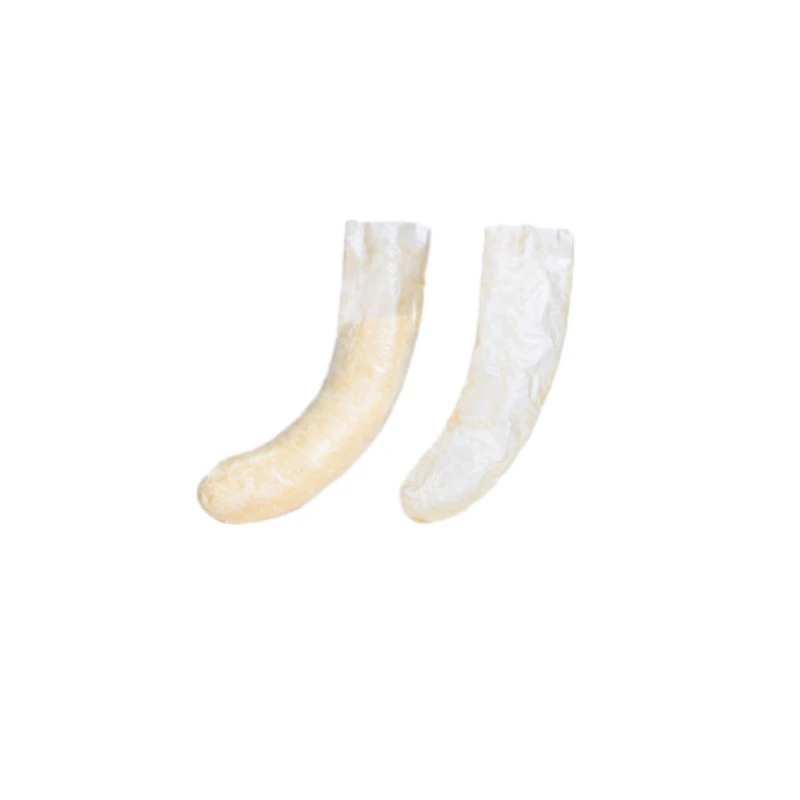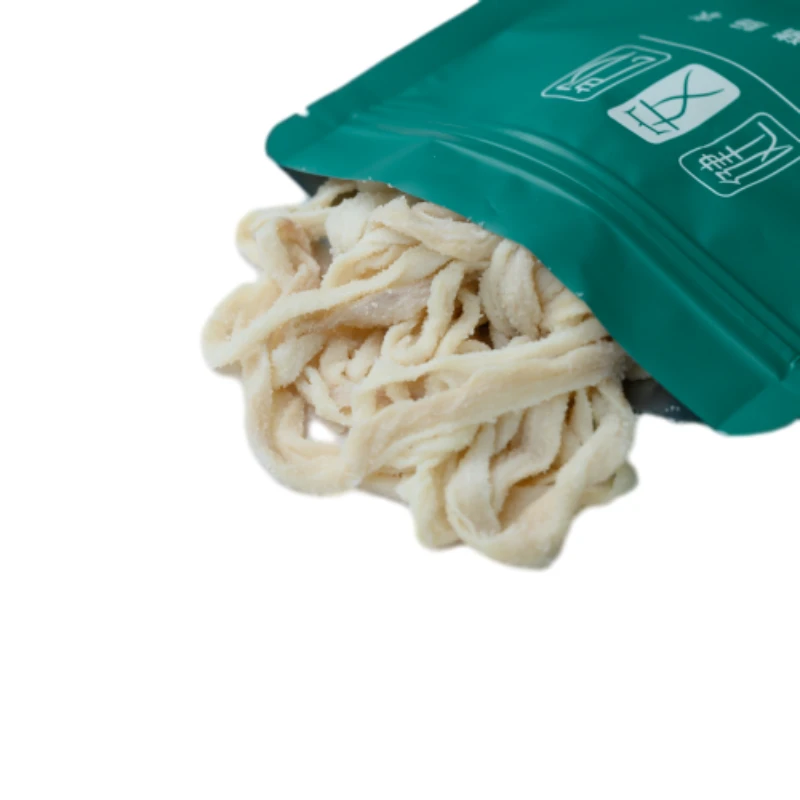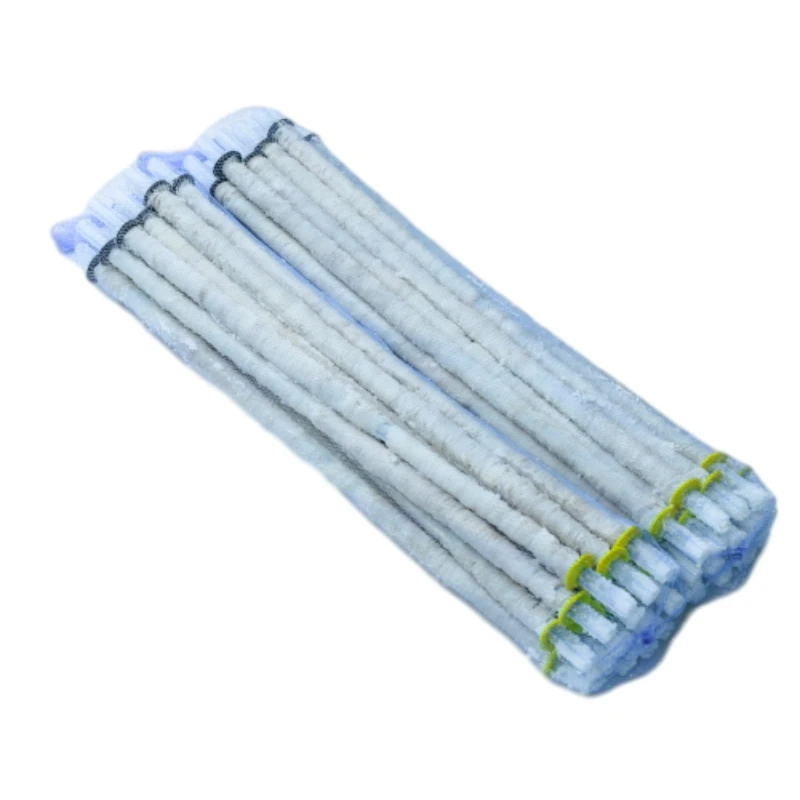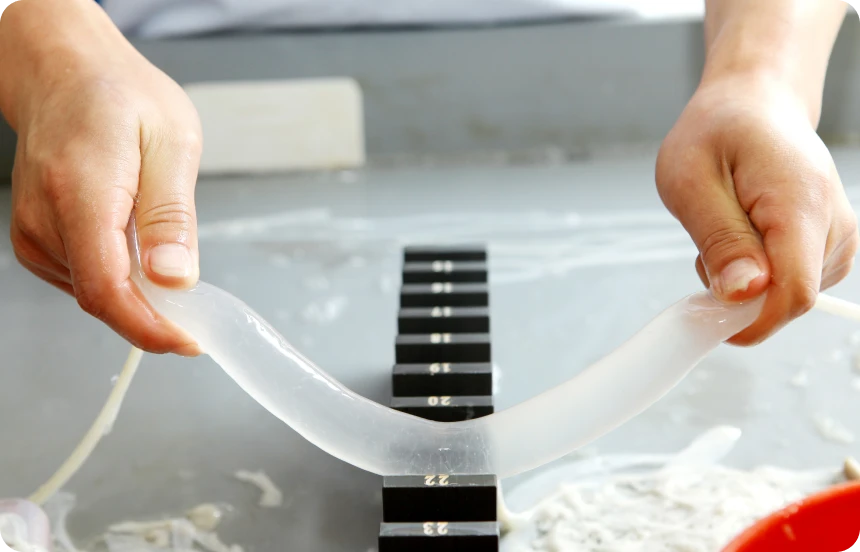Jul . 08, 2025 10:55
- Introduction: Overview of 20mm sausage casing products
and their relevance - Material Science: Structural properties and materials used in 19mm, 20mm, and 22mm sausage casing products
- Technical Advantages: Benefits of optimized casing sizes for production and consumer demands
- Manufacturer Comparison: Industry leaders’ offerings, performance, and pricing analysis
- Customization Solutions: Tailored approaches to sausage casing sizing for specific applications
- Real-World Application Cases: Illustrative case studies featuring 20mm sausage casing products
- Conclusion: Future trends and innovations within the sausage casing segment

(20mm sausage casing products)
Introduction to 20mm Sausage Casing Products: Meeting Modern Market Needs
The demand for 20mm sausage casing products has experienced consistent growth, driven by the rising preference for uniform, snack-sized sausages. With evolving consumer tastes and advancements in food processing, the sausage casing market has expanded to include not just the versatile 20mm size, but also closely related 19mm and 22mm sausage casing products. These specific diameters cater to the needs of high-throughput meat processors, boutique charcuterie businesses, and even large fast-food franchises. Understanding why the 20mm size stands out necessitates exploring more than its mere dimensions; factors such as machinability, filling yield, and final product texture are pivotal to its selection. This introduction maps the path for a deeper analysis of casing technology, comparative data, custom production approaches, and proven application stories.
Structural Features and Material Choices among Casing Sizes
The performance of sausage casing products, especially those in the 19mm, 20mm, and 22mm categories, is largely dictated by the raw materials used and their engineered properties. Natural casings (usually made from sheep or hog intestines) offer flexibility and a traditional bite—an aspect valued by artisanal producers. However, collagen and cellulose-based casings are engineered for uniformity and efficiency, a necessity for automated, high-volume operations.
Comparative tensile strength research indicates that collagen casings in the 20mm segment can withstand pressures up to 4.5 kg before rupture, outpacing natural casings by about 22%, according to the 2023 Report on Sausage Casing Performance by the Food Packaging Institute. The internal diameter (i.d.) tolerance for engineered casings is typically ±0.1mm, ensuring sausage weights remain highly consistent—critical for retail packaging and calorie labeling compliance.
Moisture permeability is another key attribute. A 2022 cross-analysis demonstrated that 22mm cellulose casings present the highest moisture loss during thermal processing (14.9%), followed by 20mm (13.2%) and 19mm (12.5%). Such distinctions inform producers' selection based on required juiciness and processing methods.
Technical Advantages: Optimized Sizes Fueling Production Efficiency
The primary technical advantage of 20mm sausage casing products over their 19mm and 22mm counterparts lies in their adaptability. A medium diameter of 20mm is increasingly preferred for premium snack sausages, as it balances mouthfeel, portion control, and packaging flexibility. The ability to configure extruders and filling machines with minimal downtime offers production savings; line efficiency studies show that switching from 22mm to 20mm can cut set-up adjustment times by up to 19%, with annualized cost savings reaching $40,000 for mid-size manufacturers.
In terms of consumer appeal, market research reveals that sausages with a 20mm diameter achieve 11% higher acceptance scores in blind taste tests for bite and texture compared with wider or narrower alternatives. Distribution logistics also benefit: a standard Euro crate holds 30% more 20mm sausages than 22mm, optimizing transport costs and storage space.
For industrial clients, this size flexibility brings tangible competitive advantages, particularly for fast-growing foodservice and ready-to-eat sectors.
Manufacturer Comparison: Data-Driven Review of Industry Leading Casings
The choice between suppliers for your casing needs is driven not just by pricing, but by proven reliability, scalability, and product performance. Below is a comparative matrix showcasing key data points from three industry leaders specializing in sausage casing products for the 19mm, 20mm, and 22mm sizes:
| Supplier | Casing Sizes (mm) | Material | Avg. Burst Strength (kg) | Annual Output (million m) | Lead Time (days) | Typical Pricing (USD/m) |
|---|---|---|---|---|---|---|
| CasPro Solutions | 19, 20, 22 | Collagen, Natural | 4.4 | 420 | 12 | 0.66 |
| PrimeCase Inc. | 19, 20 | Cellulose, Collagen | 4.5 | 370 | 15 | 0.59 |
| EverShell Group | 20, 22 | Natural, Cellulose | 4.1 | 310 | 10 | 0.72 |
As shown above, PrimeCase Inc. and CasPro Solutions offer comparable burst strengths for 20mm casing, but PrimeCase delivers shorter lead times, making it a preferred partner for time-sensitive operations. Meanwhile, EverShell’s focus on larger volume orders and broader casing types appeals to multinational processors prioritizing capacity over cost-per-meter.
Customization Solutions: Tailoring Casing Dimensions for Niche Markets
To remain competitive, manufacturers increasingly require casings that are engineered not just for diameter, but also for specific color, sheen, permeability, and even flavor migration properties. Leading casing producers offer bespoke formulations (e.g., low-protein collagen for a more delicate snap or antimicrobial-infused cellulose for longer shelf life). These customizations enable processors to differentiate their sausage offerings and cater to emerging trends such as plant-based proteins and lower-sodium recipes.
For example, premium snack sausages destined for convenience retail might demand a 20mm casing with a smoked hue and tighter-than-average wall thickness, providing both visual appeal and extended shelf-life. Conversely, a cocktail sausage brand may favor a softer 19mm casing to ensure gentle bite and high moisture retention, optimized for children’s palates.
The path from concept to commercial production often involves iterative prototyping and micro-run sampling, guided by rapid quality testing (burst, stretch, cook-shrink, and adhesion metrics). Survey data from 2023 notes that 68% of casing buyers who implemented custom-designed products saw an uptick in unit sales within six months of launch, validating the commercial impact of tailored solutions.
Real-World Application Cases: Success with 20mm Sausage Casing Products
Across the food processing industry, the transition toward optimized casing sizes has been guided by real operational outcomes. One leading European meat processor adopted 20mm collagen casings to produce a gourmet bratwurst tailored for quick service restaurants. The switch resulted in a 15% reduction in casing waste and standardized fill length, decreasing production variance by more than two standard deviations. Customer complaints about sausage burst during grilling dropped to nearly zero.
In another case, a North American charcuterie start-up used a custom 19mm natural casing to create artisanal, preservative-free mini sausages. This helped boost the product’s shelf presence, reflected in a 21% sales jump during the first quarter after its introduction.
Furthermore, a major Asian convenience food brand standardized its hot dog format using a special 22mm cellulose casing, optimized for both steaming and microwaving, reducing unplanned downtime by 10% across 14 processing plants. These cases underscore not merely the versatility of size options, but also the technical acumen involved in matching casing advancements to specific market demands.
Conclusion: Future Trends in 20mm Sausage Casing Products and Innovation Horizons
The segment for 20mm sausage casing products is poised for accelerated innovation in the coming years. Integrating smart packaging sensors, enhanced sustainability initiatives (biodegradable and compostable materials), and functional coatings (for improved shelf-life and flavor stability) are being actively developed. As digital traceability becomes a universal expectation from food wholesalers and consumers alike, casings with embedded tracking features may redefine supply chain transparency.
Modular production lines, driven by AI-optimized filling algorithms, stand to narrow the cost and performance gaps between the various casing sizes. For producers and buyers assessing 20mm, 19mm, and 22mm sausage casing products, remaining agile and informed about these technological shifts will be essential to maintaining both product quality and operational efficiency.
As the global sausage market continues to diversify, the interplay between consumer expectations, culinary trends, and manufacturing innovation ensures that the evolution of sausage casings—particularly 20mm products—will remain a vital part of the processed meat industry’s value chain.

(20mm sausage casing products)






